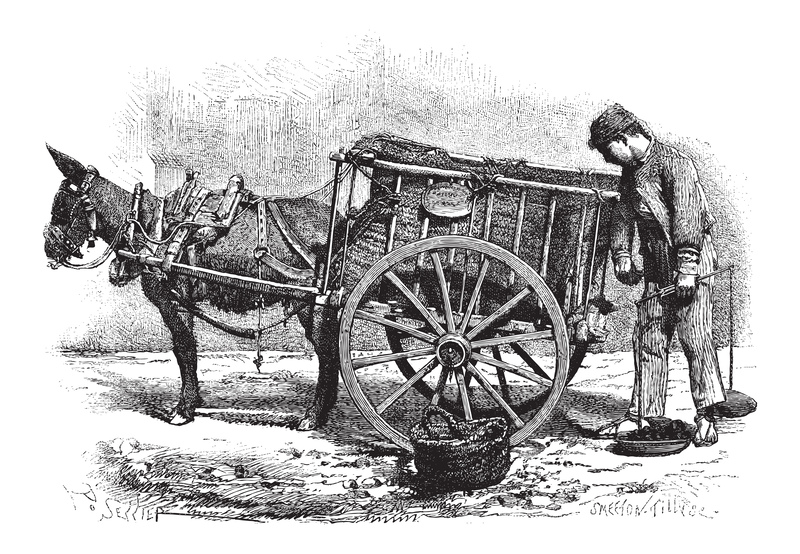Protecting the Planet One PPE Item at a Time: A Guide to Sustainable Personal Protective Equipment
Personal protective equipment (PPE) has become a daily necessity for individuals, workplaces, and healthcare professionals worldwide. However, the environmental impact of disposable masks, gloves, gowns, and other protection cannot be overlooked. Protecting the planet one PPE item at a time is not just possible--it's essential for a sustainable future. In this comprehensive guide, you will learn how to minimize environmental damage while prioritizing safety, discover eco-friendly PPE alternatives, and adopt best practices for sustainable protection.
The Environmental Impact of PPE Waste
The COVID-19 pandemic dramatically increased the use of PPE--from disposable surgical masks to latex gloves and single-use gowns. As countries scrambled to keep citizens safe, the demand for single-use protective gear skyrocketed. Yet, most of these items are made from plastic-based materials that are difficult--or impossible--to recycle. This led to a worldwide surge in plastic pollution, clogged waterways, and mounting landfill waste.
Staggering Statistics on PPE Pollution
- It's estimated that 129 billion face masks and 65 billion gloves were used globally per month during the height of the pandemic.
- According to various studies, nearly 75% of discarded PPE ends up in landfills or floating in the oceans.
- Microplastics from PPE are increasingly found in marine environments, threatening wildlife and ecosystems.
Given these alarming figures, it is clear that protecting the environment from PPE pollution is a major priority. Fortunately, innovations and responsible choices make it possible to combine protection and sustainability.

How PPE Harms the Planet
To understand the urgency of sustainable PPE, it's important to recognize how traditional PPE affects our environment:
Plastic Pollution
- Most PPE items are made from polypropylene, polyethylene, and latex--materials that take hundreds of years to decompose.
- Discarded masks with ear loops frequently entangle wildlife, causing injury or death to birds, turtles, and marine animals.
Microplastics and Toxicity
- As PPE items break down, they shed tiny plastic fibers and microbeads.
- Marine life eats these microplastics, which can enter the food chain and ultimately impact human health.
Greenhouse Gas Emissions
- The production and incineration of single-use PPE releases potent greenhouse gases.
- Improper disposal methods, such as burning, contribute directly to air pollution and climate change.
These outcomes show that transitioning to more sustainable PPE strategies is an urgent global need.
Protecting the Planet One PPE Item at a Time: Sustainable Solutions
There are a variety of ways individuals, companies, and communities are reducing the environmental impact of PPE while staying safe:
1. Eco-Friendly Reusable PPE
- Cloth Masks: When made from multiple layers of tightly woven cotton, these are washable, reusable, and just as effective as single-use masks for most public settings.
- Reusable Face Shields: Durable and easy to disinfect, these shields can be worn multiple times and are ideal for many workplace environments.
Pro tip: Look for reusable PPE products certified by environmental organizations. These often use organic, responsibly sourced, and biodegradable materials.
2. Biodegradable and Compostable PPE
Recent innovations in sustainable PPE manufacturing focus on natural fibers and biodegradable plastics:
- Biodegradable Masks and Gloves: Made from materials like bamboo fibers, polylactic acid (PLA), or cassava starch. These break down within months, not centuries.
- Compostable Surgical Gowns and Coveralls: Engineered for medical use but suitable for industrial and personal settings.
The challenge with compostable PPE is ensuring it reaches a suitable composting facility instead of being landfilled. Education and infrastructure are key!
3. PPE Recycling Programs
While most municipalities do not accept PPE in curbside recycling, specialized recycling programs are emerging:
- TerraCycle and other take-back schemes: Collect and recycle used masks, gloves, and protective eyewear.
- Hospital partnerships: Many large hospitals and healthcare systems now partner with sustainable waste management firms to recycle or safely incinerate used PPE.
4. Innovative PPE Materials
Researchers are developing new PPE materials that are environmentally friendly as well as antiviral:
- Masks with inserts made from copper-infused fabrics, which are antimicrobial and long-lasting.
- Chitosan-based gloves and gowns--this sustainable biopolymer is derived from shellfish waste and is biodegradable.
- Electrospun nanofibers for masks, providing superior filtration and easy recyclability.
5. Reduce and Reuse Strategies
Sometimes, the best approach is simply to use less. Employing the hierarchy of "Reduce, Reuse, Recycle" is vital for PPE sustainability:
- Opt for reusable PPE whenever it's safe and appropriate.
- Practice proper care and disinfection to prolong PPE life.
- Only use single-use PPE when absolutely necessary--such as in medical or high-risk environments.
Tips for Individuals: Make Your PPE Usage Planet-Friendly
While governments and manufacturers play a big role, every person can contribute to safeguarding the environment one PPE item at a time. Here's how:
- Choose wisely: Seek out certified eco-friendly PPE products.
- Minimize use: Avoid unnecessary PPE, especially in low-risk scenarios.
- Proper disposal: Cut the ear loops off masks to prevent wildlife entanglement before safe disposal.
- Sanitize and reuse: Follow manufacturer guidelines for cleaning reusable PPE.
- Ask at work: Encourage employers to source sustainable PPE and implement recycling programs.
- Stay informed: Learn about local PPE recycling and composting options.
Businesses and the PPE Sustainability Revolution
Organizations have a profound impact on how PPE affects the environment. Companies and institutions can champion the movement of protecting the planet one PPE item at a time by:
- Auditing PPE usage: Identify areas where unnecessary single-use PPE can be cut down.
- Switching to sustainable suppliers: Partner with brands that prioritize eco-friendly materials and low-waste packaging.
- Setting up PPE recycling and collection bins: Support responsible waste management throughout the organization.
- Providing training: Educate employees about the importance of sustainable PPE measures and correct disposal methods.
Corporate social responsibility (CSR) initiatives focused on green PPE not only reduce costs in the long run, they boost employee morale and improve public image.
The Role of Innovation: What's Next for Eco-Friendly PPE?
The intersection of technology and environmental consciousness is paving the way for revolutionary PPE solutions. Some of the most promising developments include:
Self-Sterilizing PPE
New materials infused with copper, silver, or graphene exhibit antiviral and antibacterial surfaces that reduce contamination risks and allow for longer use before disposal.
Modular PPE Designs
Innovative mask and face shield designs allow users to replace only worn-out filters or visors, dramatically cutting down on waste.
Automated PPE Sterilization
Ultraviolet (UV) and hydrogen peroxide-based cleaning systems enable safe reuse of high-grade PPE, especially in healthcare settings.
Blockchain for Traceability
Applying blockchain technology ensures responsible sourcing, transparency in PPE manufacturing, and effective tracking of waste streams.
Global Case Studies: Leading the Charge in PPE Sustainability
- France: The government mandated eco-certification for all masks sold in the country by 2023, giving a market boost to biodegradable, reusable alternatives.
- United Kingdom: The National Health Service introduced PPE recycling schemes in hospitals, turning used masks into visors, construction materials, and even furniture.
- Singapore: Startups are developing algae-based mask filters that are fully biodegradable and produce oxygen during their lifecycle.
- United States: Several states encourage companies to recycle nitrile gloves through mail-in programs--dramatically reducing landfill loads.

Educating and Empowering the Public
None of these innovations and initiatives will succeed without public involvement and awareness. Governments, NGOs, and businesses must collaborate to:
- Spread accurate information: Correct disposal methods and the benefits of sustainable PPE options.
- Make sustainable PPE affordable: Subsidies, tax incentives, and bulk purchasing programs help drive adoption.
- Inspire a culture of responsibility: Highlight positive stories, community cleanups, and student science projects focused on green PPE.
Protecting our planet one PPE item at a time is more than a slogan--it is a call to action for all of us.
Conclusion: A Future Where Safety and Sustainability Go Hand in Hand
Personal protective equipment is here to stay, but its environmental impact doesn't have to be. Through individual choices, business leadership, and technological innovation, we can protect our health and the Earth simultaneously. Choose reusable, compostable masks and gloves. Support PPE recycling efforts. Demand more from manufacturers and policymakers. With every thoughtful decision, you're reducing pollution and ensuring a healthier future for all.
Let's make "protecting the planet one PPE item at a time" the new gold standard--in our homes, workplaces, and communities worldwide.
- Choose mindful PPE options.
- Practice responsible disposal.
- Advocate for sustainable protection measures wherever you go.
Together, we can keep each other safe--and keep the planet safe, too.
